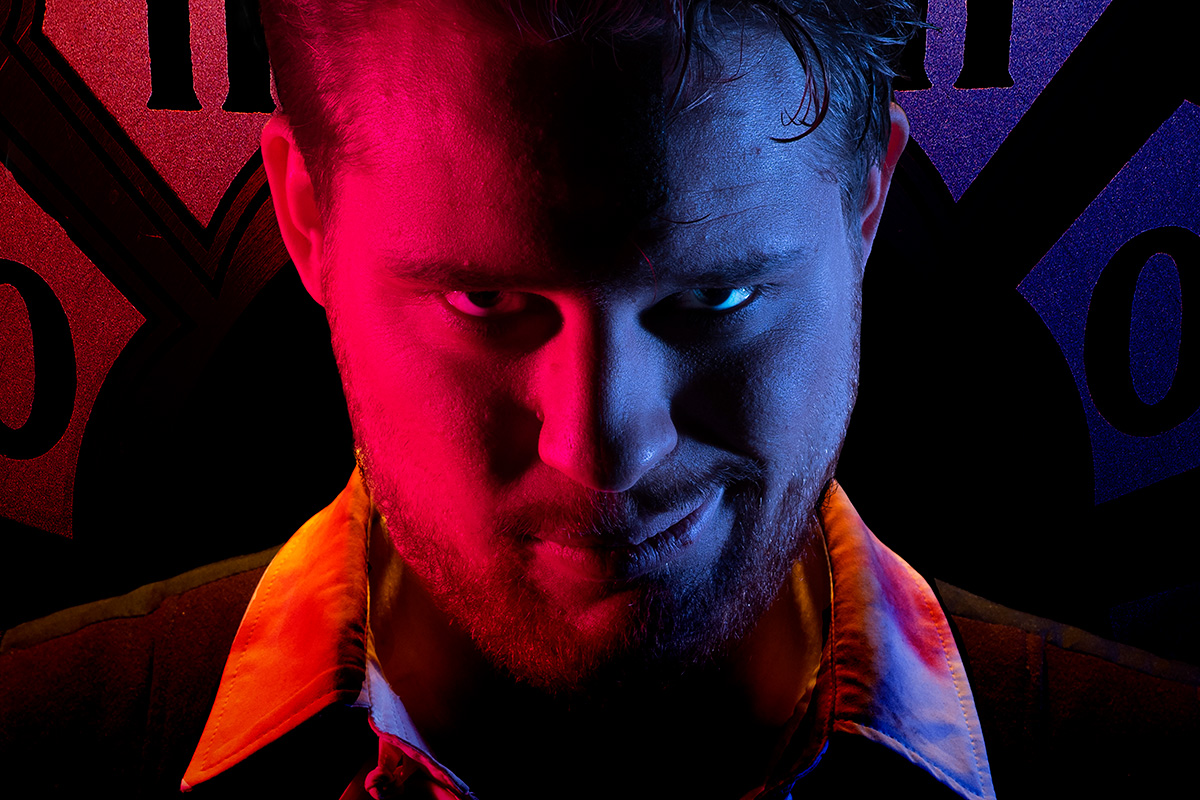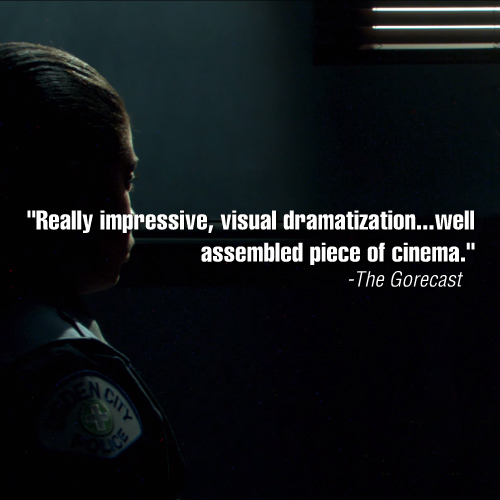
April 2020
World of Horror and Paranormal Review
By World of Horror and Paranormal
April 26, 2020
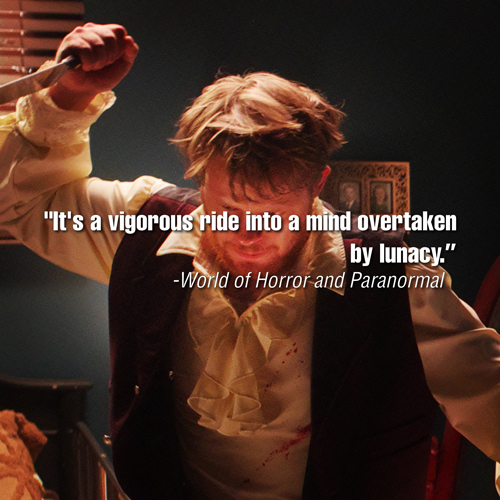
Review can be found at: https://www.youtube.com/watch?v=WlV9JqbY7Tw
Zisi Emporium Review
By Christopher Zisi
April 25, 2020
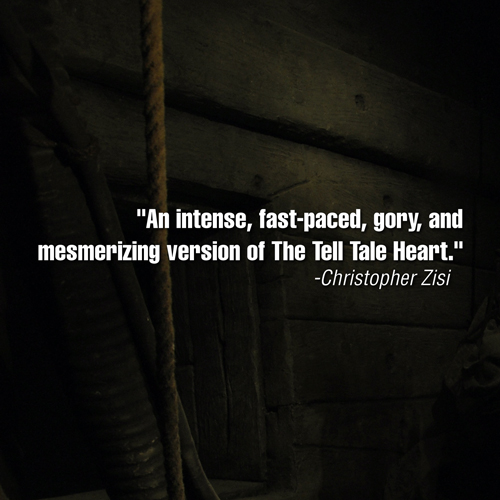
The mad do have stories to tell. What great story tellers they are. These insaniacs have heightened senses that most of us can only wonder about. Their interpretations and metaphors are succinct and fostering and us schmucks would do well to take heed of them. After all, it is the norms set by us schmucks that make it difficult for these self-proclaimed geniuses to flourish. If only we’d understand them and admired them when we should…then they could get away with murder. Hence McClain Lindquists’s 22 minute interpretation of Edgar Allan Poe’s “The Tell Tale Heart.”
Our mad man (Sonny Grimsley) is the caretaker of a very old and sick man. You know the story…perhaps you read it as a child, or in college, or heard an old radio adaptation of it. Haunting and horrific, the story easily causes us all nightmares. Our caretaker here is seemingly neat, tidy, careful, in full control of his faculties. He, of course, has just murdered and sliced up the man with the vulture eye (James C. Morris). His calmness and fastidiousness will surely convince the two cops (Mikah Olsen and Teren Turner) that their visit to the old man’s home is a wasted endeavor.
As our caretaker attempts to assuage his police visitors, his heightened senses work to betray him. The concept of time and the realization that the old man’s vulture eye was never his antagonist won’t bode well for the fastidious insaniac. A hacksaw and a meat cleaver will supply some nice gore as Mr. Lindquist delivers a short film that Poe would have loved. Creepy, edgy, and claustrophobic, we have a mad man narrator just waiting to explode in insane desperation. The scenes are interspersed with great coordination as all the elements Poe wanted to deliver to us are ever present in this adaptation.
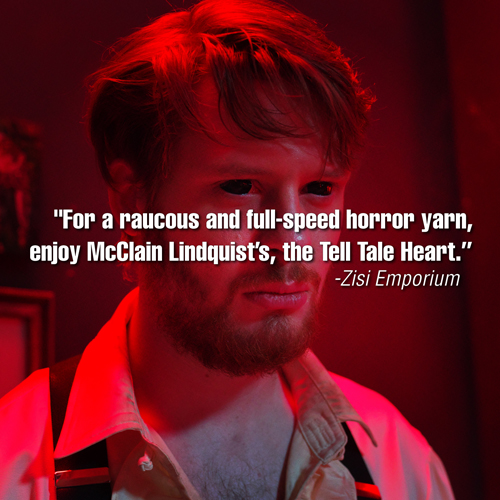
Where Hammer Films delivered us Poe stories in an almost comic-book and fun manner, Mr. Lindquist gives us an intense, fast-paced, gory, and mesmerizing version of “The Tell Tale Heart.” Madness rules and plenty of gore and hacksaw images remind us that when the insane bluff their way into the lives of the sane…spurting blood will result. For a raucous and full-speed horror yarn, enjoy McClain Lindquist’s “The Tell Tale Heart,”…E.A. Poe would have thoroughly enjoyed it.
Review can be found at: https://zisiemporium.blogspot.com/2020/04/the-tell-tale-heart-betrayed-by-madness.html
Don’s World of Horror and Exploitation Review
By Don Anelli
April 25, 2020

Forced to retell a horrific crime, a man accused of murder tells how he grew so frustrated with his boss he murdered him and tried to hide the crime before his conscious gave him away.
Overall, there was so much to like about this one. The main setup here is still quite enjoyable despite being so overly familiar which keeps the more familiar horror setups quite thrilling when they appear. The general idea here comes off nicely with the idea of how the idea grew into him actually doing the act and trying to get away with it, especially as their line of questioning grows more intensive and focused in tripping him up. The flash-cuts to the old man threatening to trip him up as the story gets harder and harder to believe is handled rather well with the expected freak-out providing this with a fantastic payoff which gives this a lot to like.
There’s also the high-quality work elsewhere on display. The house is a perfect sprawling Victorian Gothic manor, feeling quite spacious and yet still like a livable location where it soon starts to turn on him as the questions intensify. Many of the overall shots showing the outcome of the act and how he’s succumbing to the pressure are far more visually dynamic and interesting than expected which adds to the psychosis while also looking quite impressive. About the only issue here is the somewhat bizarre old-school speaking style mixing with modern-day settings, as if they forced the story without transplanting the original words at all but this grows into a nice charm throughout here.
Review can be found at: https://donshorrorworld.blogspot.com/2020/04/the-tell-tale-heart-2020-by-mcclain.html
Indie Film Cafe Review
By Indie Film Cafe
April 25, 2020
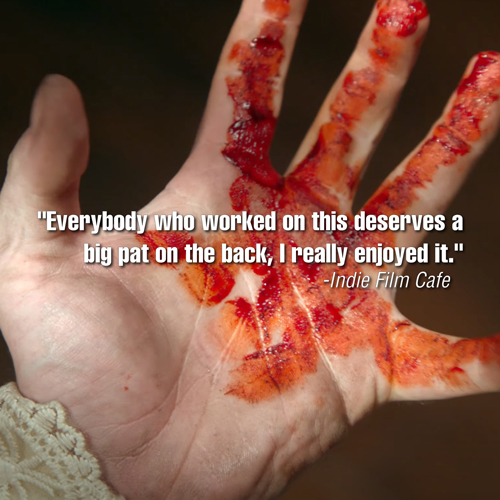
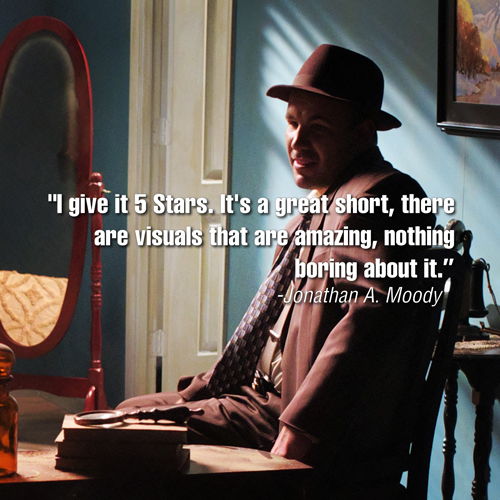
Review can be found at: https://www.youtube.com/watch?v=JEmKI-Td2dU
Geek Legion of Doom Review
By Geek Legion of Doom
April 22, 2020

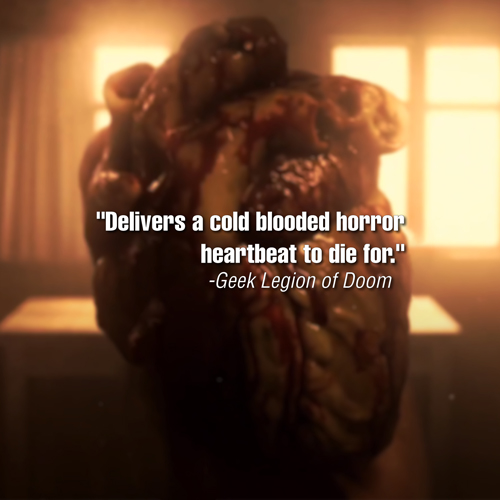
Review can be found at: https://www.youtube.com/watch?v=RyhZhzkwshM
Nightmare Feed Review
By Reed Alexander
April 22, 2020
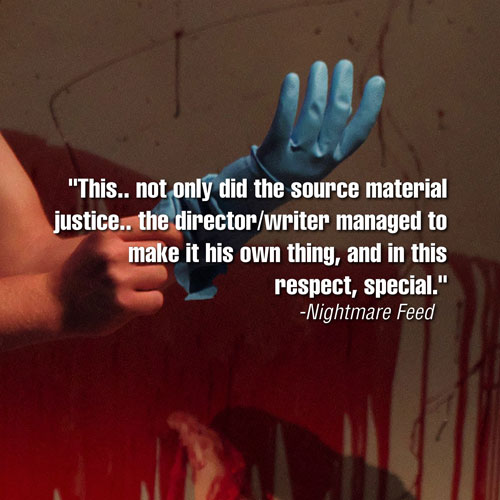
I was able to secure a early viewing key to do review on this amazing adaptation of the Poe Classic The Tell Tale Heart.
This one is gonna be rife with –SPOILERS-, but c’mon. It’s The Tell Tale Heart, by Edgar Allan Poe.
I was particularly impressed by this retelling of Poe’s classic, The Tell Tale Heart. Those familiar with my reviews, know I’m not fond of poetry, and though I’ve reviewed some books of poetry in the past (like The Configuration Discordant, by John Baltisberger), poetry is usually not my cup of tea. Poe was always an exception to that rule, and while my love of Poe isn’t terribly nuanced or refined, it is love, none the less. Screwing up one of my favorite poems by Poe could spell certain doom for any series or film under my scrutiny. Moreover, a shameless rehash of something that fall under public domain is another good way to compel my ire.
This, however, not only did the source material justice, but like the newest rendition of H. P. Lovecraft’s Color Out of Space (2019), the director/writer managed to make it his own thing, and in this respect, special.
There are two classic interpretation of Poe’s Tell Tale Heart. The first (being the most common), is of a scoundrels individual, bent on taking advantage of an old, feeble, rich man. He then goes mad from the guilt of his murder, hearing the ever beating heart of his dead victim, and from this eventually confesses to the crime. The second is a more devastating tale of whoa, I think. There in, it is postulated that the old man is a particularly vicious and villainous individual, and his servant murders him after years of abuse and trauma. The trauma predating the murder causes not guilt, but rather a demonic hallucination of the servant’s master tormenting him there after, with the sound of his ever beating sinister heart.
This retelling spins it in a different third way. When the story open, the servant is already quite mad. One can only speculate as to why, but the old man seems kind enough. This suggests that the derangement of the servant was simply a part of his character. Because the servant was already mad, he superimposes a sinister nature over the old man, who in reality is quite harmless and even kind. The characteristics Poe prescribed the old man which originally made him seem sinister, are merely reflections of the servants deranged point of view.
Their use of the source material was already impressive, I should say, but the quality was pretty good too. It should be noted, this has the same production value as the movie Lo (2009). That means the production value is likely just a hair over ‘student film.’ Meaning I am grading on a bit of a curve, do to the shoe-string budget. But, like Welcome to the Horror Show, I don’t even have to as they tempered their lack of budget by focusing on the simplistic and getting it perfect.
So the acting is good for horror, the practical FX brilliantly used, the atmosphere well developed and smartly applied.
One of my favorite parts about this movie is actually the acting and how they reconcile the language of the narrator (the servant), with the modern setting. The flowery prose of the narrator from the original telling are a bit antiquated for a modern setting, so, they made that part of the servant’s derangement. He talks like an old timey theater actor as part of his madness.
This drives home the motivations behind his character and the reasoning for the plot as it unfolds. The servant holds himself in such high esteem, and considers himself a man of such impressive refinement, that he finds the decrepit characteristics of the old man to be disturbing or even disgusting. Indeed, the old man’s eye problems, are not just the signs of age, they are the mark of evil itself. This is how, through madness, the servant justifies his actions.
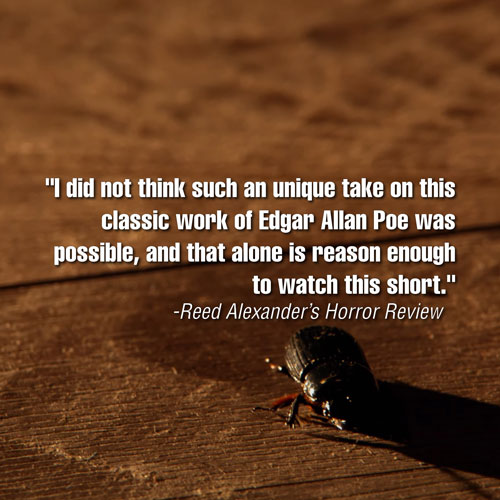
I did not think such an unique take on this classic work of Edgar Allan Poe was possible, and that alone is reason enough to watch this short.
Follow them on Twitter @telltalefilm, for the official release date!
Review can be found at: https://nightmarefeed.com/2020/04/22/found-on-the-internet-the-tell-tail-heart-a-short-film/
Monster Movie Happy Hour Review
By Monster Movie Happy Hour
April 21, 2020
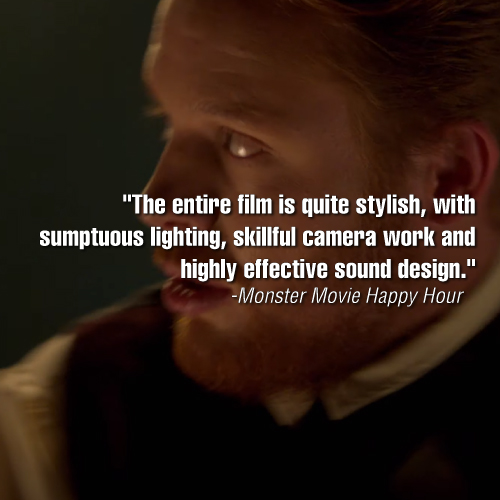
“The Tell Tale Heart”, directed by McClain Lindquist, is a fast-paced, updated interpretation of Poe’s classic story. The storytelling choices are such that we hate to give any spoilers, but we can say this:
The entire film is quite stylish, with sumptuous lighting, skillful camera work and highly effective sound design.
The main character is enthusiastically played, with a contemptuous swagger, by Sonny Grimsley.
The scenes of violence are more than sufficiently bloody for a tale that revolves around the dismemberment of “the old man’s body” and removal of his still-beating heart.
The Monster Movie Happy Hour crew is not in the business of reviewing movies, in the usual sense. However, we feel compelled to say, “Cheers”, to both cast and crew; if you get a chance, we recommend you watch this frantic, 22-minute look at a descent into madness.
Keep your vulturous, film-covered eye on this movie’s availability by CLICKING HERE.
Review can be found at: http://www.monstermoviehappyhour.com/recommended
R.L. Terry ReelView Review
By Ryan L. Terry
April 17, 2020
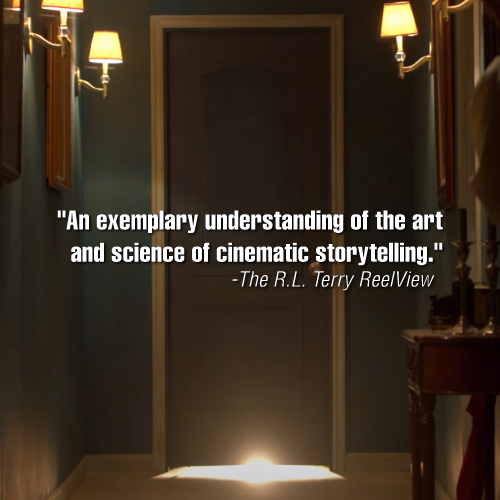
Tell-tale signs of outstanding cinematic talent right here! I don’t often choose to write a formal review of short films for which I receive screeners. Usually, I Tweet my thoughts on the film when I receive a request from an eager filmmaker who’s interested in what Professor Horror, as I’ve come to be known on #FilmTwitter, has to say about his or her motion picture endeavor. Writer-Director McClain Lindquist crafts a wholly original expression of the familiar macabre tale. While there have been many adaptations of Edgar Allan Poe’s The Tell-Tale Heart, this is arguably one of the best and freshest interpretations of the masterful storytelling of Poe. I appreciate this adaptation for its fresh take on a familiar story whilst delivering the visceral horror and intellectually-driven elements of the bizarre tale of murder. Every nuance of Poe’s short story is depicted with sheer reverence for the source material, while delivering an original expression of the timeless literary work.
Lindquist reimagines this story through the lens of a David Lynchian approach (with the color pallet of David Fincher), delivering vibes of Muholland Drive. While there are clearly some cracks in the veneer related to the time period in which this story takes place, these cracks are insignificant enough not to detract from the overall cinematic experience. Lindquist should have selected either a modern or gothic period in which to set his adaptation. Actor Sonny Grimsley (what a great last name for horror) not only brings the words of The Narrator to the screen, but he talks to the audience with such incredible sincerity that the utter madness of it all is visualized beautifully. One of the points I hammer in my screenwriting class is dramatize don’t tell. Dramatizing means more than showing the audience the story, it means finding the conflict in every beat of every scene. Fortunately for this adaptation, Grimsley brilliantly dramatizes every word spoken in such a manner that you will be completely enveloped in the twisted tale to which he beckons you to listen.

Both the cinematography and stylistic editing are on point, and compliment the tone wonderfully. Although there are a number of standout moments from the film, I want to highlight how the duality of the narrator was expressed dramatically through the use of costuming and set design as well as a mirror. It would be all too easy for The Narrator to express his duality through verbal exposition (as this is taken from a short story), but the creative choice to couple the words of Poe with these striking images shows a strong knowledge of how to effectively go from page to screen. Often short films suffer from poorly executed technical elements, but I am pleased to report that all technical elements demonstrate an exemplary understanding of the art and science of cinematic storytelling. In addition to the technical elements is the haunting and unsettling score by Joel Pack. Lacking a true score is all too commonplace in many short films; not so with Lindquists’s The Tell-Tale Heart, Pack’s score is a character in and of itself. However, it never steals the scene, which allows the audience to become fully wrapped up in everything The Narrator says and does. I love seeing practical effects in all films, but especially horror. Thankfully, there are plenty of gruesome special makeup effects in this film for even the most insatiable appetite for gore, which never falling into the gratuitous category.
Lindquist certainly knows how to capture the madness in The Tell-Tale Heart. In many of Poe’s works, madness is often represented a lack of sufficient reasoning for committing murder or some other undesirable behavior. Lindquist illustrates The Narrator’s madness through the unreasonable rationale he uses to justify the murder of his roommate. Not only do we hear about the attempt at rationalization, it is dramatized for the screen. The only reason the narrator provides, in an attempt to justify the murder, is the simple fact that the roommate’s blind eye covered with a murky blue film bothers him a great deal–haunts him, even. He goes onto explain that he feels that he is being watched all the time. Being angered by the man’s eye is such a petty reason for the narrator to murder him, which proves that he is mentally unstable. Developing his plan for over a week, his madness is further represented through the meticulous premeditation of the method of murder. Furthermore, when The Narrator initially proposes that the “vulture eye” is his motive for murdering his roommate, he is not even fully certain that this was indeed his reason for committing the murder. And through the direction of Lindquist and the impeccable performance by Grimsley, we get into the mind of a madman in terrifying ways that are sure to induce nightmares.
Lindquist’s The Tell-Tale Heart is evidence of a future successful career as a horror filmmaker. I am eager to follow his filmography as he will hopefully use this short film as a springboard to write and direct original content, because we need more original storytellers in this sea of remakes and reboots.
Review can be found at: https://rlterryreelview.com/2020/04/17/telltaleheart/
Tales of Terror Review
By Steve Hutchison
April 16, 2020
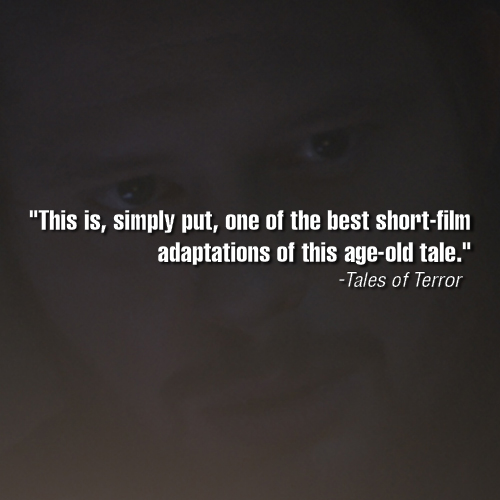
Sonny Grimsley’s character, “The Narrator”, isn’t doing too well. He never gets the benefit of the doubt. There’s blood on his shirt. This is one of the few times The Tell-Tale Heart was ever told out of chronological order, taking into account that the audience has seen a movie or two. It’s also one of the few times this short story is adapted in color and in a modern setting.
The film looks like a thousand bucks. The narrator is unreliable because he’s a nutcase, and that’s the perfect excuse to numb us with mind-fucking eye-candy. This is, simply put, one of the best short-film adaptations of this age-old tale. This story has been around since 1843, and it’s still relevant. Take your pills and don’t kill people, y’all; that’s the message.
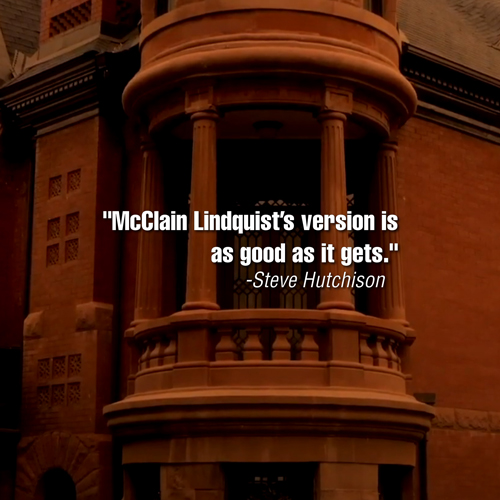
Most renditions of this adaptation leave the audience in a state of confusion, but there are no questions left unanswered with this one. No stone is left unturned and the ambiance is thicker than it ever was. Every edge is polished. Dialogue covers every plot hole possible. Unless you’re going to give this story the feature-length treatment, McClain Lindquist’s version is as good as it gets.
Review can be found at: https://terror.ca/movie/tt11622026
